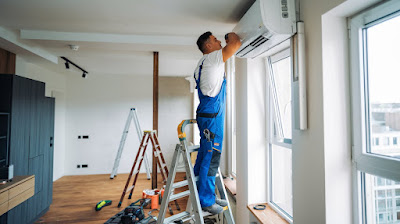Installing air conditioning in apartments has become an increasingly common solution, especially in regions with intense summers. However, there are several factors to consider before carrying out this installation, ranging from technical issues to condominium rules and local laws. Understanding these aspects is essential to avoid future problems and ensure that the device works efficiently and safely.
1. Types of Air Conditioning Most Used in Apartments
First of all, it is important to choose the type of air conditioning that best suits your apartment. The most common options are the window air conditioner, the split air conditioner and the portable air conditioner. The window model is more traditional, but the split air conditioner has become the favorite due to its efficiency and lower noise. The portable air conditioner is an interesting option for those who cannot make major structural changes to the property, as it does not require a fixed installation. Choosing the right device depends on both the size of the room and the structural limitations of the apartment.
2. Technical Considerations for Installation
Installing an air conditioner, especially a split model, requires technical care that includes assessing the electrical capacity of the property, the ideal location for installing the external unit, and the correct sizing of the unit in relation to the environment. In addition, it is essential to ensure that the location chosen for the external unit has good air circulation to prevent the equipment from overheating. It is also necessary to check the electrical power available in the apartment, as in many cases it will be necessary to adjust the electrical system to support the additional load.
3. Condominium Rules and Authorizations
Another important aspect to consider is the condominium rules. Many buildings have specific regulations regarding the installation of air conditioning, especially regarding the location of the external unit. In some cases, condominiums require an aesthetic standard to maintain a uniform façade, which may limit the options for where the unit can be installed. In addition, it is always advisable to consult the building manager or administration to ensure that the installation follows the standards and avoids future problems.
4. Maintenance and Energy Saving
After installation, regular maintenance of the air conditioner is essential to ensure its proper functioning and extend its useful life. Dirty filters, for example, can reduce the efficiency of the device and increase energy consumption. In addition, it is important to be aware of the conscious use of the device to avoid waste. Using the timer function, adjusting the temperature to appropriate levels and closing doors and windows during use are practices that help reduce energy consumption, making the use of the air conditioner more economical.
Conclusion
Installing an air conditioner in apartments requires planning and attention to technical and regulatory details. Choosing the right model, following the condominium rules and performing adequate maintenance are essential steps to ensure thermal comfort in your property without compromising the efficiency and safety of the equipment. With these precautions, it is possible to enjoy a climate-controlled environment with peace of mind and comfort, especially on hotter days.
